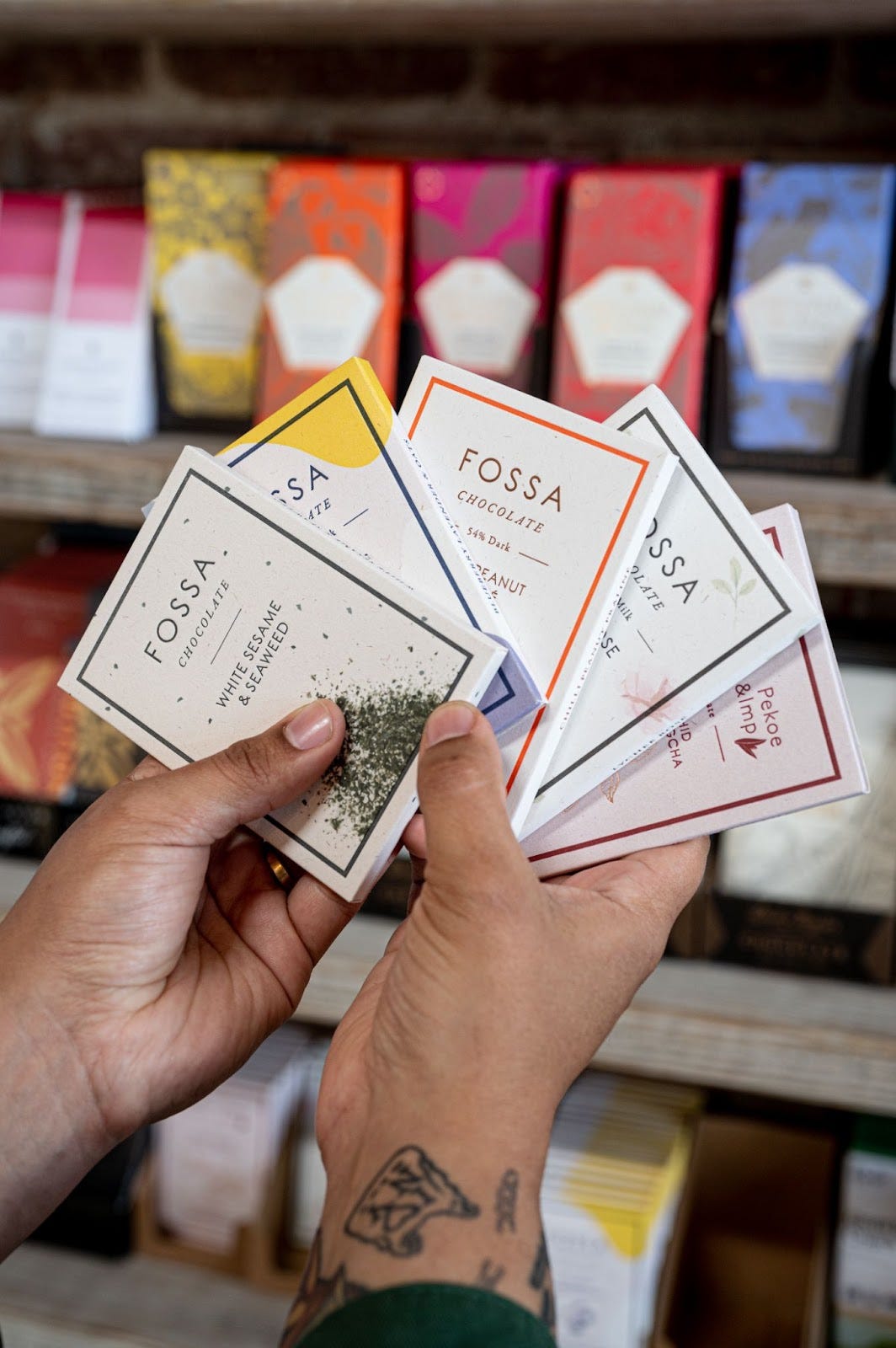What's In Our Basket: Chocolate
"My favorite way to experience dark chocolate is to unwrap a bunch and try them all side by side so I can taste the differences."

There is a level of access you have as a restaurant professional to reach out to all your vendors and say, for example, I need a new olive oil and I am looking for something really peppery, not too grassy, and have 20 samples of olive oils curated to your preferences hand delivered to you so you can choose your absolute favorite. The result of so many years working in kitchens, for me, is that for certain products I am an insufferable snob. Nowhere in the store is that as apparent as in the wall of chocolate bars.
Dark chocolate is, at its best, just cacao beans and sugar. At the farms, the cacao is harvested, the beans are fermented, and dried. At the chocolatier, the beans are roasted, winnowed, then conched with sugar. The conches I have used are straight sided metal vessels, with a round stone slab at the base, with large stone rollers, so as the slab rotates, the rollers agitate and refine the chocolate and incorporate the sugar. The longer the chocolate is conched for, the more fine the texture. As with many simple processes, there are as many opportunities to add beautiful nuance as there are for flaws to creep in. I am a stickler for texture; a great chocolate bar has a beautiful shine and snap, but a silky texture that melts with ease on your tongue. My favorite way to experience dark chocolate is to unwrap a bunch of single origin dark chocolates, and try them all side by side, so I can taste the differences. The Ritual Chocolate 75% from Peru tastes like summer stone fruit, toasted nuts with a floral undertone. The Original Beans Zoque from Mexico is all sweet and floral tropical fruits like lychee and coconut. The 68% chocolate by Lumineux from the Philippines tastes like toasted marshmallows. I could go on forever; more is more where chocolate is concerned.

I was a purist, only dark chocolate for me, but I have come around to flavored chocolates. For that, I blame Fossa. I blame a lot on Fossa; I didn’t think white chocolate was particularly exciting until I tried their white sesame and seaweed white chocolate, which might be my favorite bar on the wall. Their salted egg chocolate bar upended my idea of what a chocolate bar was, let alone could be. Qantu can take the blame for my new interest in milk chocolates. Their goat milk chocolate bar, ‘Dreams of Cashmere,’ is divine. The goat’s milk tang plays off the fruit notes of plum and pear, all rounded out with caramel overtones. We have a bar from Chocolate Naive Co out of Lithuania that has massive chunks of dried pulp from the cacao fruit studding the bar, adding a new dimension to the fruit notes that you get from the chocolate bar itself.

You can’t miss the legacy of colonialism in chocolate; very little ‘fancy’ chocolate historically was made in cacao growing regions. This is a really exciting time to buy and sell chocolate, because there are companies now producing and exporting truly beautiful chocolate, with a physically close connection to the farms where the cacao is grown. I love this not just because it aligns with my values, but because it opens up a whole new universe of possibilities for flavors and inclusions. I have written about Cuna de Piedra’s bars before, and will probably write about them again. Their Chiapas bar with Mezcal joven is incredible. Texturally, flavor profile, presentation, I like everything about it. Casa Bosques makes a bar with a leaf of hoja santa in the middle. That licorice/eucalyptus/tarragon flavor from the hoja santa is a revelation. Clearly I could go on about chocolate forever, and I haven’t even touched all the chocolate-covered sweet snacks, or the drinking chocolates. There is too much to muse about for one Gjournals entry, but do me a favor and unwrap and nibble 6 dark chocolate bars at once. Try something you think you hate, you just might prove yourself wrong. If you need a recommendation, you know where to find me.





